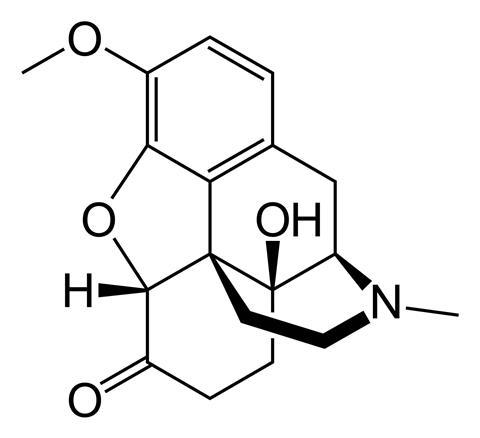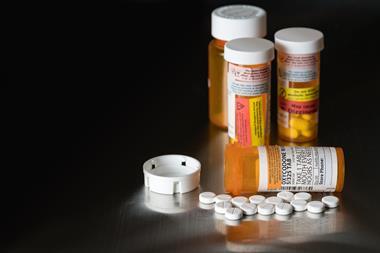Ben Valsler
The history of medicine is littered with well-meaning wrong turns and misunderstood cul-de-sacs. This week, Frances Addison explains how, in our attempts to control and manage pain, we’ve created a modern medical crisis.
Frances Addison
In the early 1900s, German doctors were faced with a problem: the non-addictive, safe alternative to morphine they’d been using to treat severe pain for the last decade was turning out to be more problematic than they’d hoped. In response to the growing number of complaints, the drug’s developer, Bayer, had ceased marketing it. Within the next few decades, its medical uses would die out almost completely. The drug was diacetylmorphine, but it’s better known as heroin, and nowadays it’s often thought of as the most addictive substance on the planet.

But while heroin was clearly not a suitable candidate for the job, its sudden absence left doctors with very few alternatives to morphine when treating moderate or severe pain. Behind the scenes, drug developers were scrambling to identify potential candidates to plug the gap and, unsurprisingly, many of them turned back to opium poppies for inspiration. It was during this bloom in opioid research that a range of new drugs were developed, including two of the most commonly used pain medications available today: oxycodone and hydrocodone.
Oxycodone came first. It was developed in 1916 by Martin Freund and Edmund Speyer at the University of Frankfurt, who derived it from a minor constituent of opium, thebaine. Hydrocodone followed four years later when Carl Mannich and Helene Löwenheim adapted it from naturally occurring codeine.
While they may have had different origins, the two drugs are remarkably similar. Their structures only differ by a single extra oxygen atom in oxycodone, and they both function by targeting opioid receptors in the brain to mitigate the pain response.


As with heroin before them, the drugs were rapidly adopted in Europe as alternatives to morphine and by the early 1940s, they were both available on the US market. Nowadays, use of these drugs in Europe has dwindled to almost nothing, but it’s a different story across the Atlantic. Under the brand name Vicodin, a combination of hydrocodone and acetaminophen frequently tops lists of the most commonly prescribed medications in the US, while oxycodone is the primary drug at work in both Percocet and OxyContin. Together, the two opioids represent a substantial proportion of US prescription painkiller use.
While these drugs are extremely potent painkillers, they both also suffer from a fatal flaw: when taken in high enough doses, they can induce euphoria. This is the intense rush of pleasure that characterises opioid use, a result of the activation of neurotransmitters that flood the brain with dopamine, and it’s one of the primary drivers behind opioid addiction.
Unsurprisingly, hydrocodone and oxycodone have played a significant part in the opioid epidemic in the US; the 2016 National Survey on Drug Use and Health estimated that, of the 11.5 million people who had misused prescription painkillers that year, 6.9 million Americans had misused hydrocodone and a further 3.9 million had misused oxycodone. Even Kentucky, which pulled OxyContin from shelves in 2010 following a lawsuit, saw the third highest overdose rate in the country in 2015, with 23% of cases being attributed to oxycodone despite its drastically-decreased accessibility. A further 21% of those cases were the result of hydrocodone.
The misuse of these drugs has had significant impact on the pharmaceutical companies responsible for their production, particularly in the case of OxyContin-manufacturer Purdue Pharma. Kentucky successfully sued the company for $24 million in 2007 over misrepresentation of the drug’s addictive properties, while a similar lawsuit earlier this year, which also included Teva and Johnson & Johnson, saw Perdue settle with the state of Oklahoma out of court for a further $270 million.

The final blow came in Ohio, where a large litigation case aggregating nearly 2000 related lawsuits was set to start in October 2019. Purdue was just one of the many drug developers, distributors, and pharmacies targeted by the suit, but Purdue’s owners, the Sackler family, took proactive measures to avoid going to court. To settle all claims against Purdue, they offered a deal thought to be worth more than $10 billion that was accepted by most of the plaintiffs involved. As part of that settlement, Purdue Pharma filed for Chapter 11 bankruptcy on 15 September and will now undergo a restructuring to become a public beneficiary trust with all drug sale profits going to the plaintiffs of the case.
The impact that oxycodone and hydrocodone have had on medicine is clear, both good and bad. Without strong painkillers, medical practices like surgery would be untenable, and patients with chronic pain problems wouldn’t be able to manage their conditions in the way they do now. At the same time, the addictiveness of the compounds has led to countless deaths across the last century and – certainly in the US – opioid misuse continues to be at crisis level.
Ben Valsler
That was Frances Addison on oxycodone and hydrocodone, some of the most prescribed – and most abused – painkillers in the US. But, of course, we continue to look to the natural world for new and medically useful molecules, as we’ll find out next time with Mike Freemantle.
Mike Freemantle
The first naturally-occurring iminosugar detected was a glucose analogue. In 1965, scientists in Japan discovered the compound in Streptomyces nojiriensis, a species of bacterium isolated from the soil at Lake Nojiri. It exhibited antibiotic properties and was given the name nojirimycin.
Ben Valsler
Explore the potential therapeutic benefits of iminosugars next week. Until then, get in touch with any compound suggestions – email chemistryworld@rsc.org or tweet @chemistryworld. I’m Ben Valsler, thanks for listening.













No comments yet